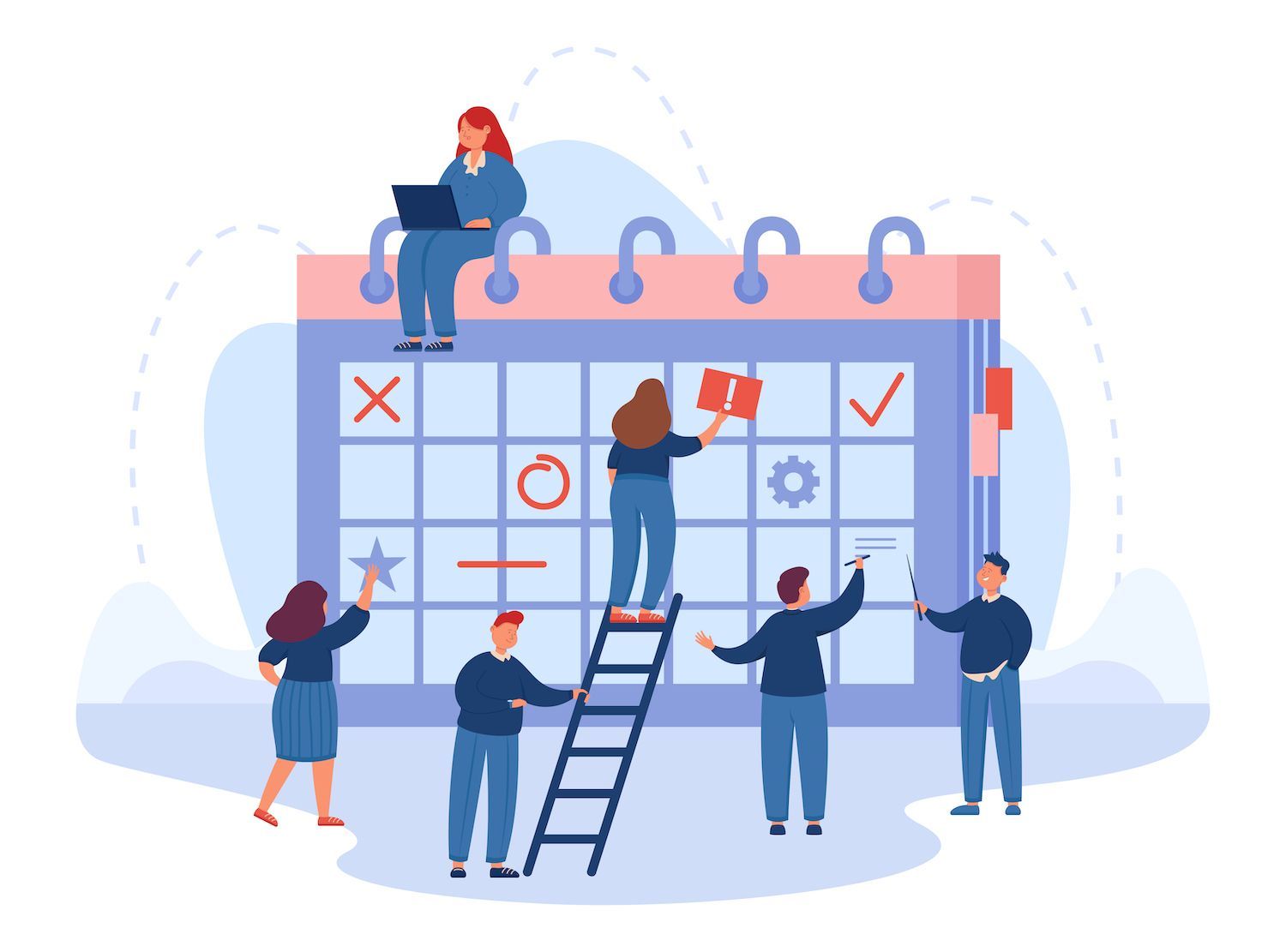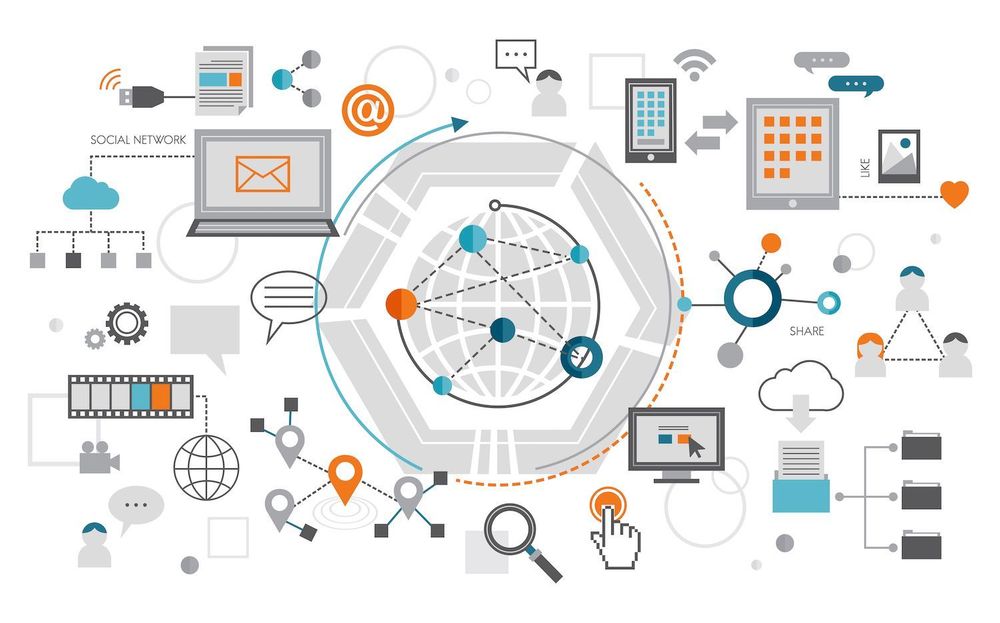Accounting for Ecommerce Basics: Principles to run a successful store
Running an ecommerce business takes not just good ideas and products, but also inventory management and marketing. Additionally, you need an accounting system that can track the money. How much are you spending? What are your profits? Do you meet your budget for your business? Are the authorities pleased with the performance of your business? Ecommerce accounting uses well-established procedures to track your financial records and business transactions. It also keeps you current on tax laws as well as payroll and profits.
If you're just starting an online shop, or have been running for a time and realize you it's time to track your company's finances, this ecommerce accounting guide will help you move toward the proper direction.
Accounting for eCommerce allows you to analyze the financial health of your business and develop better financial forecasts as your growing business expands.
What does ecommerce accounting involve?
Ecommerce businesses are built on the transactions that occur and also inventory. It is where you make the profits. Distributing items. You buy and replenish inventory. The fundamental principles of eCommerce accounting start with the process to keep track of and reporting on your transactions. It includes purchase orders bills, invoices, expenses as well as taxation.
It goes further beyond this. Accounting firms study the data and utilize the data to create accounts so that they can evaluate and report on the financial performance of your business.Ecommerce firms also need specialized attention due to the fundamentals of business models.

Imagine what could happen if you sell a item through your online store. Your customer is likely to use their credit card to pay payment to the payment processor. What are the various ways in which the sale will impact your financials?
- Your payment processor has gotten funds, but they aren't yet in your account at this time.
- Sales tax is incurred through a myriad of methods, and may be incurred from different regions or from a state
- Inventory declines
- The cost of the credit card or the processing fees are added to the charges
- The actual income generated from sales differs from the cost of selling
Whichever sales channel you choose, the simple fact that you made selling can impact many aspects of your financial recordsand its repercussions after the sale must be recorded as part of your record of financial transactions for the next few months. In the event that an order is returned, return, the bulk of the transactions that are involved will have to be changed or reversed.
That's only one aspect.
The tracking of some tasks is the job that the accountant. we'll discuss the distinctions between bookkeeping and accounting in the e-commerce industry a bit more in the future.
Let's start with some basic accounting concepts.

The fundamentals of accounting
These are the most important terms that you should know about ecommerce accounting:
Transactions
The term "transaction" refers to the time when funds are spent, received, or requested from a business or vendor.
An exchange can refer to any of the following:
- Money the business owner invests into the business
- The revenue from sales
- Invoices
- These expenses cover salaries, marketing, travel, and construction expenses
- The assets purchased include vehicles, office equipment properties, materials, etc.
An individual transaction could contain multiple parts. If you are paying an hourly worker such as a salesperson, you need to establish the amount of time they worked and their total wages, tax deductions and their net pay. Accounting software that is of the highest quality will be able to perform all the above functions.
Transactions for ecommerce companies may become complicated because of certain factors, particularly the sales tax and timing issues caused by the separation between consumer and business.
For instance, do you add sales tax at the time you purchase? If so What happens to the cash if your product is returned within a month?
Accounting for Ecommerce is designed to manage the process and transaction so that the aforementioned issues don't affect the efficiency of your business.

Debits and credits
Every transaction is tracked by the system that tracks debits and credits. We must first establish some important terms:
Debit The record of the funds that were taken from your account. The debit will show up on your statement every time you make a purchase.
Credit: A record of the total amount added to your account.
Assets Properties (real and intellectual) that is owned by an organization.
Liabilities Liabilities are obligations of a company that have not yet completed. The word "liability" refers to a claim against assets that can be found in an account of balance.
Equity The amount of assets that is left after debits are subtracted from them.
Now, we can examine how these concepts fit into the accounting principal equation
Assets = Liabilities + Equity (Owner's or Corporation's)
A debit is added on the left side of the equation, as an asset. Credits are added to the right.As a simple example, if you make sales of $500, that $500 gets debited and added to the capital assets of your business. Also, it is credited to owner's equity through the earnings. If something is deducted and creditable, an additional item must also be credited, because it helps to keep the balance.
This is a very simplified explanation. However, it provides a good understanding of what the accounting software is doing to record the transactions.
Cost of goods that are sold (COGS)
Accounting for Ecommerce must give particular attention to the cost of goods sold. This is referring to all costs associated with selling the item. This excludes items such as advertising or payroll.
COGS covers all inventory costs including storage, buying the inventory, handling, and transportation. The cost of inventory is one of the biggest expenses for an online retailer If you don't have the right accounting information on the cost of goods sold the margins of your profit and tax-deductible earnings might be misaligned.
An inaccurate COGS also makes difficult to determine what to do with marketing and advertising, the costs you need to decide, the amount of stock to purchase, whether you should hire employees, and the amount of warehouse space you will need to acquire.
Profit margins
Margins represent the actual revenue your business earns following the sale is completed. The way to calculate margins is this formula:
Margin is (Revenue + Cost of Goods) Revenue
In essence, it's your net profit expressed as a percent. If you can make a sale of 10,000 worth of items over the course of a week and your COGS on those products is $3000, your margins would be 70 percent.

Receivables and accounts payables
These terms define money that hasn't exchanged hands but is scheduled to.
Receivables are the amount due to your account at the bank. For instance, if for example you send out an invoice, the money goes to accounts receivable until the recipient pays the amount due on the invoice.
The accounts payable system works exactly the way it works, however reversed. When your company makes an arrangement with a vendor, and that vendor gives the buyer a purchase request, it goes in the Accounts Payable account up until you complete the payment.
Accounting for Ecommerce vs BookkeepingWhat's the difference?
There is a little the two fields of bookkeeping are a bit similar to financial accounting. The main difference is that bookkeepers manage certain events, while accountants analyze and record the events to provide a precise and valuable overview of your company's budget.
A sports analogy can help to comprehend the bookkeeper as the play-by-play announcer Accounting professionals are like analysts as well as color commentaries. The bookkeeper tracks what happened. Accounting professionals explain what the significance is behind it.
What does an ecommerce bookkeeper do?
The bookkeeping tasks focus on the records, transactions as well as financial institutions and banks. If you employ employees, the bookkeeper is responsible for the payroll. Also, the bookkeeper handles other things such as:
- Processing invoices
- Send receipts
- Keep track of what goes into and out of your company bank account
- Purchases of inventory records
- Make sure you reconcile your bank account every month
- Make monthly financial statements.
- Prepare year-end financial statements as well as tax documents
An accurate bookkeeping for your online business can aid in creating a solid and stable business model.

What are ecommerce accountants expected to accomplish?
A ecommerce accountant can do things like
- Analyze and track operational costs and performance of the business
- Conduct financial forecasting
- Check your financial statements, which includes those provided by your bookkeeper
- Tax planning is essential, and includes the filing of tax returns
- A report on how you manage your cash flow
The purpose for an accountant is to help business owners who are involved in e-commerce make sound financial choices.
Are you able to afford the hiring of new staff? Do you require expansion into a new state or country? What is the minimum amount that you could charge for the new products?
Accounting for E-commerce in its most efficient form can be utilized to tackle the issues.
The accounting methods used by e-commerce sellers
There are two main methods of accounting online: the cash method as well as that of accrual. The method of accrual is the most frequent one and is dependent on the type and size of your business, may be required by law.
The most significant difference between the two methods of recognizing transactions is the manner in which a transaction is recognized.
Cash basis accounting
In cash basis accounting, an event is deemed to have taken place at the time that money been transferred. When you pay an invoice, cash basis accounting considers it an expense. If you have an invoice in January, and you pay it in March, cash accounting shows it as an expense during March.
The process of income is the same. If you make a sale which is then followed by clients signing to a monthly installment arrangement that distributes the amount across four months. Cash accounting is where the income is regarded in the form of a monthly income each month in which money is earned.
Accrual method of accounting
In the case of accounting for accrual it is determined that the activity was recognized once the job was completed and the invoice has been sent. When you make an order to purchase a new office supply in January. Then, you transfer it to the credit card of your company. Office paper will be delivered instantly but you don't actually buy it until February when your statements on your credit card balances are accepted.

Accounting for accrual takes place when you receive the record. Once you have received the receipt and stored in your file system, and then keep track of the amount. It's an expense for January even if you do not pay for it until February.
Using the same example, accrual accounting tracks the total purchase cost as income for the day that the transaction is concluded and you don't actually receive all the money up to four months after.
Which type of accounting approach is more suitable for businesses that sell online?
Accrual accounting gives you a more precise information about the costs of selling the goods you sell each month. If you buy paper in August, it is part of the costs associated with running your company, but in August not until you arrive at being able to pay for the paper. If you sell in the month of May, that was a sale that occurred in May, not in July when your customer pays the cash.
Additionally, it is better when it is combined with managing the inventory.
Imagine you have $30,000 worth of new inventory purchases in September when you decide to sell the inventory over the next four months, prior to the season of giving. Cash accounting is where you'd record the entire amount of inventory purchased as a cost for September as a month. If you're using accrual accounting, you'd declare the purchase as an expense when you are able to sell the product.
If you used this method of cash, you'd have huge costs in September, and artificially large profit margins during November, October and even December as it appears that there is no cost to selling your products.
Accrual accounting allows you to track the cost of doing your business monthly to determine which months yield the most profits.
Three financial statements that constitute the most important ones
If you're planning to outsource your accounting for e-commerce and bookkeeping, you'll need be able to comprehend and understand the financial statements. If you're doing this yourself by using the e-commerce bookkeeping software to track transaction information will enable you to create the three financial statements that must be compiled. They includes income statements (also called the "profit and loss report" also known as P&L), balance sheets and cash flow statements.
Income statement
An income statement includes the profit made over the specified time period for example, one month. People refer to profit when they use the word "bottom line." Profit is your net income. If you've made losses during that period then your net loss is.
Balance sheet
They provide details on the amount of your liabilities, assets, and equity at an exact date. This is usually at the end of the month either a quarter or a year. They give a clear picture of your financial condition.
Assets are items owned by a person that are worth something. Accounting payables, also referred to as liabilities are a form of debt you have to pay.
If you look back at the basic accounting equation which was discussed earlier it will be clear that equity is basically the sum of the assets and liabilities. Subtract liabilities from assets, and you'll get the "book value" also known as equity, your company.
Statement of cash flow
The statement of cash flow shows how the amount of money in your account been changing over the period of time specified.
Three reports are easily created by your accounting software, so long as you've entered the correct financial information. If you're busy to do that, it's the perfect moment to hire an online bookkeeper.

The most important financial metrics to use for eCommerce accounting
TaxJar has published an awesome piece on e-commerce accounting metrics. It is important to realize that accounting doesn't simply recording data about financials. Accounting also provides you with information of the financial condition and the growth (or decline) of your company's online presence.
Here are the most important accounting parameters:
Revenue
Revenue is your total income before expenses have been deducted. It's relatively easy to keep track of. It, however, provides an incomplete perspective.
Margin of contribution
The cost of sale is a combination of the cost of selling that product. This is similar to the COGS figures from the past however, it's applicable to every item you offer. This does not take into account the operational costs.
Profit
Profits are derived from results generated after taking away all your expenses from your revenue, including operational and marketing costs. If you've got a good revenues but your earnings are low, you either have to increase your revenue or cut costs.
Rate of conversion for E-commerce
It is the proportion of people who come to your website that purchase an item.
Costs for customer acquisition
Typically, it costs significantly less to sell additional sales to your existing customers than to acquire a new client.
So, if your CAC is very high and you're not willing to put an end to your advertisements, you've got two options:
- Do your best to increase or improve your marketing
- Start to promote more effectively to existing customers
Customer lifetime value
If you're just a beginning eCommerce seller, you'll be having a difficult time making this decision during the initial year. With a good accounting system it's possible to estimate this amount to come in the near future.
The amount you pay for helps make sense of the costs associated with your marketing. For instance, if you have a high CAC but the lifetime value of the customer is more than the CAC, it's still worth it to gain those clients.
Average order value
For smaller companies, especially This is a better measure to choose rather than the life-time value. If you spend 10 dollars in order to get clients, and you spend about $25 for the average purchase, it's a good deal, as long as your other expenses aren't too high. If you're able ramp that up as you reach more clients, then you'll have fun.
Cart abandonment rate
The amount of customers buying this product is incredibly excessive for retailers on the internet. Based on TaxJar around 70% of shoppers put products in carts however they never purchase them.
One of the most efficient ways to reduce abandonment rates is to notify abandoned cart emails, which can be automated with an appropriate email software, like, EmailPoet.

If you can reduce the abandonment rate to 50% or 60% percent it will result in an impressive increase in sales. In the event that all it takes is a few automatic emails, there's no problem.
Return and refund rates for customers
Do many customers return products for a refund? It's a sign there is something badly. Keep track of this and do everything you can to decrease the risk.
Five essential ecommerce accounting tasks to take on
If you're in the early stages of becoming an e-commerce company manager, you should be able to handle basic accounting acumen now to avoid ending up in hot water in the future. Just to be clear"hot water" may refer to a myriad of items, like:
- Taxes not paid -- sales tax, income tax or state and local taxes
- Tax returns that aren't complete
- The inappropriate use of inventory
- Employers you cannot afford to hire
- Withdrawing too much equity
Here are the steps you should take to get your online accounting system up and running at a high from the beginning:
1. Create a bank account that is separate from the company accounts
The small-sized business owners who own eCommerce tend to ignore this as they're engaged in different startup projects.

But business accounting becomes very difficult when you combine the business and personal aspects. The account for your business is where you'll use to fund business-related expenses. It's the place where you'll pay your income earned from sales.
In order to open a company accounts, you'll require a Tax ID for the business you run.
2. Make sure you are ready for employees and contractors.
If you're planning to employ employees, it is necessary to set up ways to collect tax withholding. If you choose to run the company entirely independently, there's a possibility that you'll still need to hire contractors on certain tasks. Contractors who are paid more than a certain annual amount throughout the U.S. must be sent 1099s, so be sure to
- Track who you've paid as well as the sum you've given them
- You should request a W-9 form from each contractor
- Make sure you have current addresses for each individual you work with.
3. Use Accounting software
If you plan to handle hundreds or thousands of transactions every month, then you'll need accounting software, such as QuickBooks Online, Xero, or FreshBooks. Companies with less transactions may be able to use Excel spreadsheets. Excel spreadsheet, however a high-transaction business won't be able to keep up through manual input of information.
The Ecommerce Accounting Software automates the majority of the essential accounting tasks and makes your life easier. It stores, records, and retrieves data from financial records, as well as generates financial reports and statement.

4. Be sure to save every receipt, invoice and other documentation as well as payment records
The Reliability Principle of Accounting says that transactions that have supporting documentation should be recorded. If you don't have any documentation of an activity that you don't have documentation for, it's not able to be considered income or expense. If you seek to get tax advantages when you have the expense you don't have any documentation for the cost you paid, that could be considered tax evasion.
Keep receipts and other documents that are physically. Save them in photos. electronically. Make sure to keep all receipts and invoices in a separate email folder in addition to your regular inbox.

5. Be aware of taxes and tax regulations
Tax laws vary greatly based upon the nature of your business and where it operates. It is important to understand the compliance of sales tax as well as import taxes when you're involved in international transactions, tax withholding every quarter taxation and any other taxes that are specific to your country, state cities, provinces, or even region.
These taxes are incorporated into your accounting software as well as your financial statements. Always consult with a tax expert to make sure you're using the proper procedures.There's plenty more to discuss ecommerce tax administration. Two major tax concerns you'll need address:
Taxes on sales and trackers
Ecommerce sales taxes have been found to be very complex. Nearly every US states now has online sales taxes, as and the EU also has a sales tax system.
Within the U.S., each state has different tax rates as well as having their own regulations for when sales tax applies.
Payment of the estimated quarterly business tax
Pre-tax business earnings are tax-free. Like a typical 1099-employee, the e-commerce company earns cash prior to the tax deadline on the income.
And like a 1099 employee and a 1099 employee, you must pay the quarterly tax. If you fail to do so then the government can be penalized for late payment on your tax bill.

What can you do about this? It's important to steer free of getting a long way behind in your taxes. The best method for reducing quarterly tax burdens is to determine the amount you will pay in your earnings each month and use it to cover estimated tax payments every quarter.
Software for accounting can deal with all this and also taxation on sales. In terms of software...
The reasons your business should use accounting software
It's worth some moment to rethink this issue and be sure to understand that there are advantages to making use of tools that will help you handle your accounting for e-commerce.
As you've discovered, tax administration has proven to be extremely challenging particularly the tax on revenues and sales through diverse channels of sales. If you operate an online company that's selling its products within the US or across a wide variety of states, then you'll be unable to manage this all by yourself. The business you run is the sole responsibility of you to manage it.
The software also handles your quarterly tax allocation and tax liability, which you'll need to pay for tax on income, and help in the preparation of the tax return at the end of the year. If you're also liable to state and local taxes The complexity will increase. An accounting software program that is reliable will be able to meet all the demands.

Another reason is that accounting software makes it easier to monitor your earnings and expenditures by creating accounting statements that ensure you are aware of the profit margin every month and capable of assessing your company's capital.
Thirdly, accounting software can assist in managing payroll, which includes employees on contract. If you are not planning to pay for the bookkeeping and accounting services for e-commerce and bookkeeping, it's essential to use accounting software.
Are you hiring bookkeepers and accountants or should you make it all on your own?
If you don't have an accounting system or you've got one but don't want to be responsible for using the system, you'll be required to employ an accountant. But as your business grows and expands, you'll need examine the accounting companies which are aware of the particulars of ecommerce businesses.
Many business owners in the field of e-commerce like the idea of running their own business, even serving as Chief Financial Director. so long as their business remains small, you might have the ability to do the job in this manner. But let's define "small."
When an online business is earning upwards of $100,000 or more each year in net income it is likely to be uncontrollable in terms of your accounting systems if you're selling products in several states or nations. The sales taxes alone just become too complicated.
Additionally, there is the problem with dealing with return, shipping as well as chargebacks. All other issues. A majority of online stores offer lower priced products, and also offer volume. Except for the rare one of the exceptions, this is a sign that you're likely to have a lot of transactions.
A greater number of transactions means more time it takes to keep track of all the transactions. Even an "small" online business that earns just $100,000 in net profits per year selling products from $5-$20 is bound to be awash with transactions.
If your company is only selling in one state, region, province, or nation, the degree of tax complexity decreases. If you're in that situation, you might be able to complete this work yourself should you wish to take on the additional task.
You can test your choice and see how it does. You are able to alter your decision later.
Is accounting covered?
is aware of the responsibilities that everyday the business owner faces. Inputting in transactions manually and creating financial statements can be laborious and tax planning could cause you to be overwhelmed, but accounting is essential for running a profitable business.
This post was posted on here
